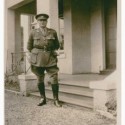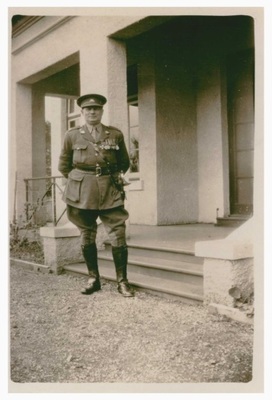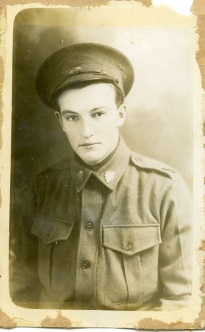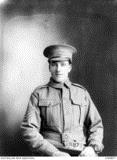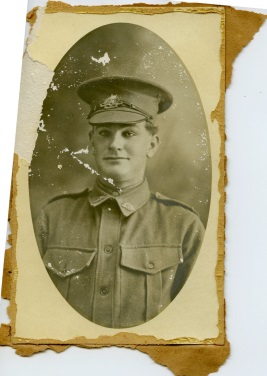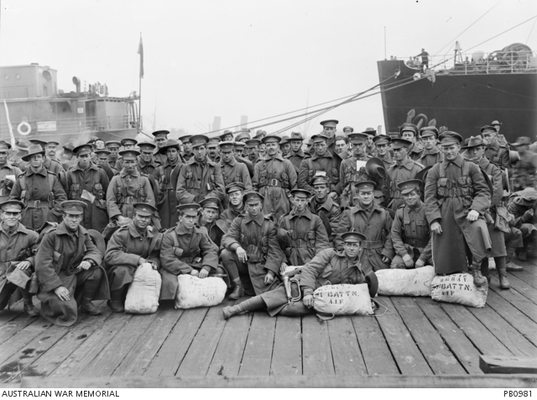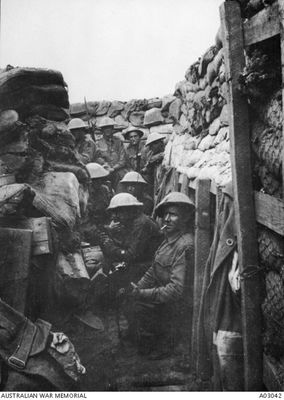DANDENONG and District Historical Society has researched the honours and awards that Dandenong’s soldiers received during World War I.
To mark Anzac Day, the Journal features a selection of their stories.
Harold Ordish
DISTINGUISHED Service Order recipient Harold Ordish had been on the instructional staff at the Royal Military College Duntroon before joined the 10th Machine Gun Company of the 38th Battalion on 23 February 1916.
He was 42 years old and married to Ada Jane Brough when he boarded HMAT Ascanius on 27 May 1916 and travelled to France.
By 1 April 1916 he was promoted to lieutenant and by 1 May he was a captain.
When Sir Douglas Haig was appointed Commander-in-Chief of the British armies in France and Flanders in December 1915, he was expected to follow the tradition of his predecessors with the periodical despatches from the front, each detailing the progress of his armies’ campaigns since the last report.
Captain Ordish was mentioned in Sir Douglas’s despatch of 9 April 1917and he was promoted to Major on 3 June 1917.
He again was mentioned in Sir Douglas’s despatch of 7 November 1917 for distinguished and gallant services and devotion to duty during the period of 20 February to 21 September 1917.
He was wounded in the field and in 1918 he was awarded the Distinguished Service Order.
He remained in England after the war until January 1920 and his appointment was terminated in Melbourne on 1 May 1920.
He remained a professional solider and lived in Randwick, Sydney, until his death at age 73.
Reginald Pickett
REGINALD James Pickett was a 22-year-old bricklayer living in Maude Street, Dandenong, when he enlisted on the 23 March 1915.
He was a lieutenant in the 24th Battalion, which served during the Gallipoli campaign and in the trenches of the Western Front in France and Belgium.
It was raised in haste and received very little training before sailing from Melbourne aboard the Egypt-bound Euripides on 10 May 1915, just a week after being formed.
The 24th took part in the second Battle of Bullecourt in 1917 and suffered more than 80 per cent casualties.
It was there that Lieutenant Pickett suffered the wounds that earnt him the Military Cross.
The citation in the London Gazette said that His Majesty the King was graciously pleased to confer the honour “in recognition of his gallantry and devotion to duty in the field”.
“Though wounded in the forearm, he led repeated bombing attacks against the enemy for five hours, doing most valuable work at a critical time, clearing the enemy out of the trenches on the flanks of the Hindenburg Line which was captured on 3 May 1917,” the citation said.
On 9 October 1917, an enemy machine gunner sniped Lieutenant Pickett through the head and body in the attack on Daisy Wood forward of Broodseinde Ridge.
He was reported killed in action. His records show no known grave.
Charles Bellett
CHARLES Frederick Bellett was a single, 23-year-old farmer living with his parents on Powers Road, Dandenong, when he enlisted on 1 March 2916 in the 5th Machine Gun Battalion.
He left Melbourne on the France-bound Port Lincoln on 4 May 1916.
His Military Medal citation said he displayed very conspicuous bravery during the operations near Bellicourt on 29 September 1918.
“The locality in which he was waiting with his section pending orders to advance was being heavily shelled and swept by machine gun fire, with the result that a number of our troops and Americans became casualties,” it said.
“Private Bellett, with a total disregard for his personal safety, under heavy shell and machine gun fire, rendered first aid to the wounded which could not have been obtained otherwise for some hours owing the scarcity of stretcher bearers.
“This soldier’s work through the whole series of operations leading up to the capture of the Hindenburg Line has been very brilliant and of a high standard.”
He returned to Australia in July 1919 and lived in the Dandenong and Carrum area.
In 1968 he was living in Thames Promenade, Chelsea, and died at age 81 in 1975. He never married.
Edward Haycraft
EDWARD Haycraft was a 23-year-old butcher living with his mate’s parents – the Belletts of Powers Road in Dandenong – when he enlisted on 11 February 1916.
He joined the 46th Battalion, 5th Reinforcement and sailed for France on 7 September 1916.
He received his Military Medal for gallant work in the field near Albert on 6 April 1918.
About 3am, an officer lay severely wounded in no man’s land with frequent bursts of machine gun fire hampering rescue efforts.
An officer managed to bring him 50 yards closer to safety before Private Haycraft – well aware of the danger after seeing four others wounded in the attempt – went forward and rendered great assistance in effecting the rescue.
He then volunteered and helped to carry the wounded officer to the regimental aid post 1200 yards away, under machine gun fire throughout the journey.
His coolness and willingness were exemplary.
During the spring offensive, Private Haycraft was wounded on 11 July 1918 and the same day died from his wounds at the 47th casualty clearing station.
Reverend AC Harris officiated at his burial on 12 July at Crouy, a village about 16 kilometres from Amiens, France.
Norman Greaves
ELIZABETH Greaves of Pultney Street, Dandenong, saw her 25-year-old son Norman Leslie Greaves off to the war.
He was an operation porter with the railways when he joined the 24th Battalion on 2 August 1915.
He left for Egypt on 27 October 1915.
Greaves was with the 24th Battalion when it saw major action in France at Poziers and Mouguet Farm.
On 30 June 1916 he displayed conspicuous devotion to duty as a telephonist in maintaining communication between the enemy parapet and his line.
He was wounded under cross machine gun fire but still stopped a captured enemy soldier from escaping.
He remained on duty until the last and was awarded the Military Medal for his efforts.
The wound he suffered sent him to hospital in England and then home to Australia in August 1917, and he was discharged from the Australian Imperial Force on 23 October 1917.
It appears he married Gertrude Mabel Candy at the Victoria Barracks in Collingwood on 21 September 1915 before heading overseas.
He returned to this marriage and had three sons. Gertrude died in St Kilda at age 33 in 1933.
In 1919, Greaves was on the electoral role for Loch, listed as the assistant station master at Woodleigh and apparently single.
In 1922, he appears on the role for Echuca as the station master of Tungamah, married to Gertrude Mable Sewell with a son and a daughter.
It appears Greaves – and Gertrude while she was alive – moved around Victoria in his role as a stationmaster until 1939.
After that, no record of his whereabouts have been found until his death at age 82 at Koroit in western Victoria.
From the Historical Society’s investigations, Greaves seems to have had a way with ladies.
His war records contain letters from two ladies – one in Kent, England, and one in Leongatha – who were desperate to contact him.
Greaves seems to have been very attractive.

